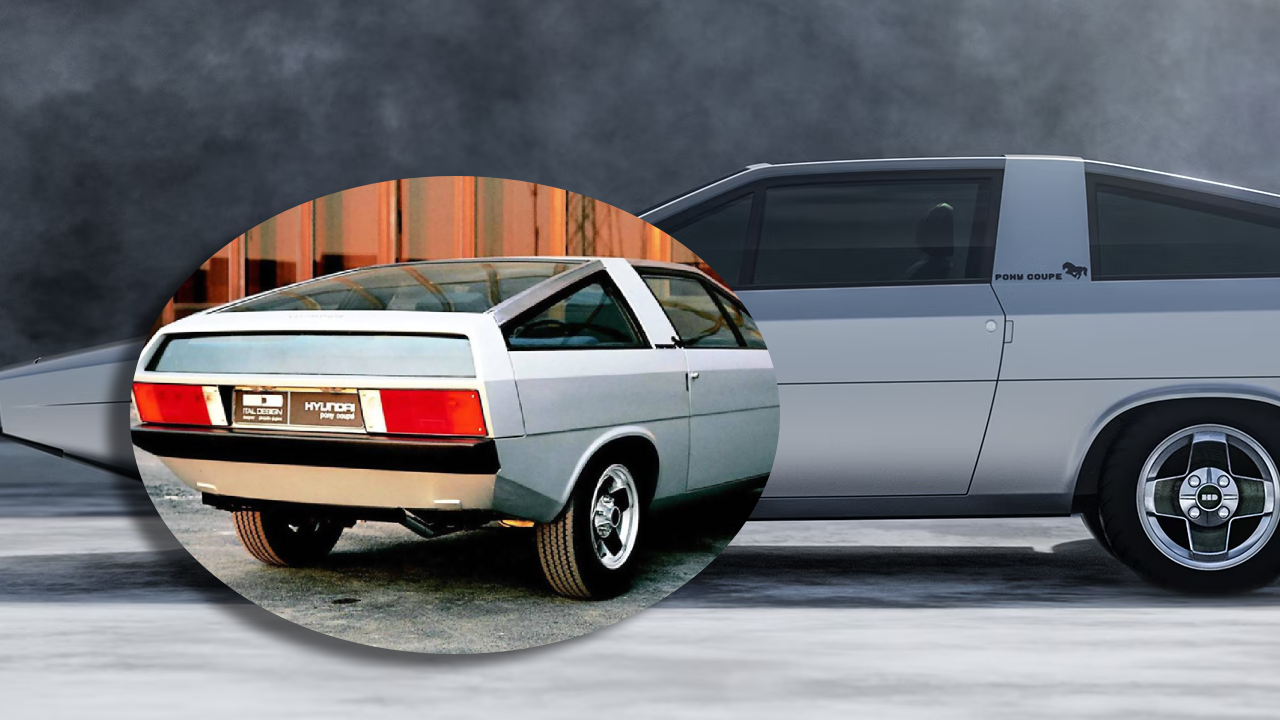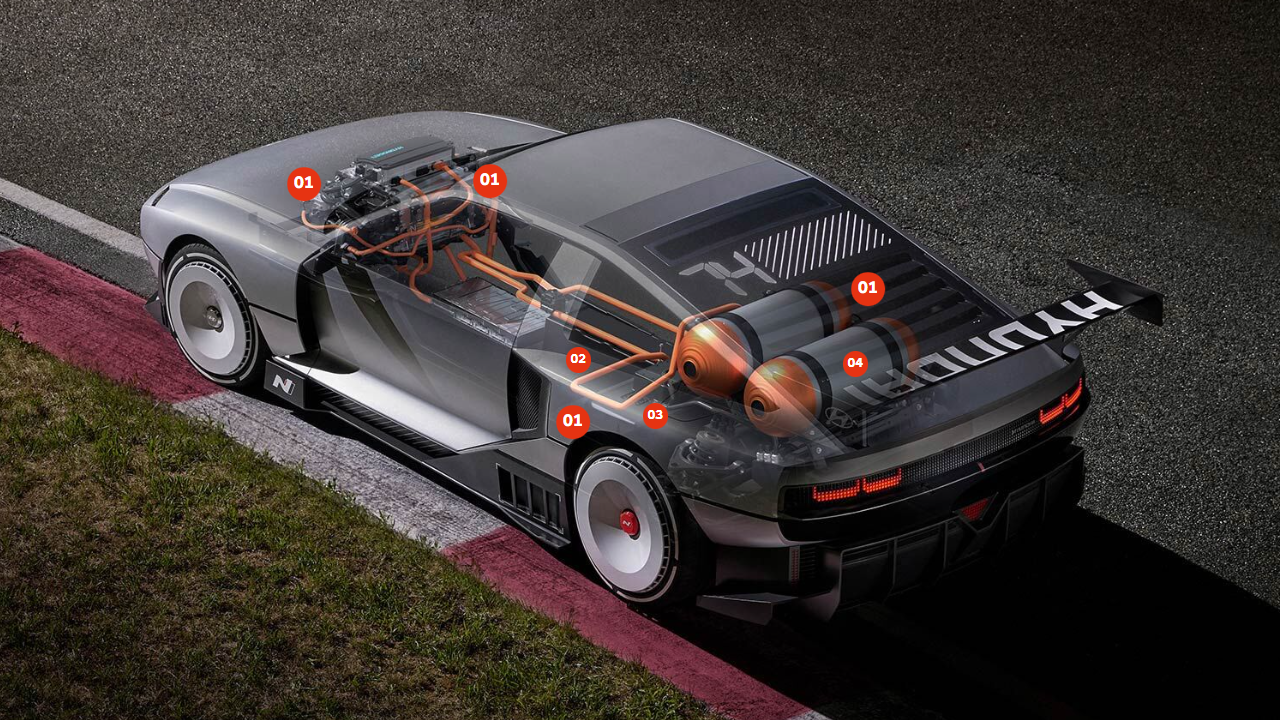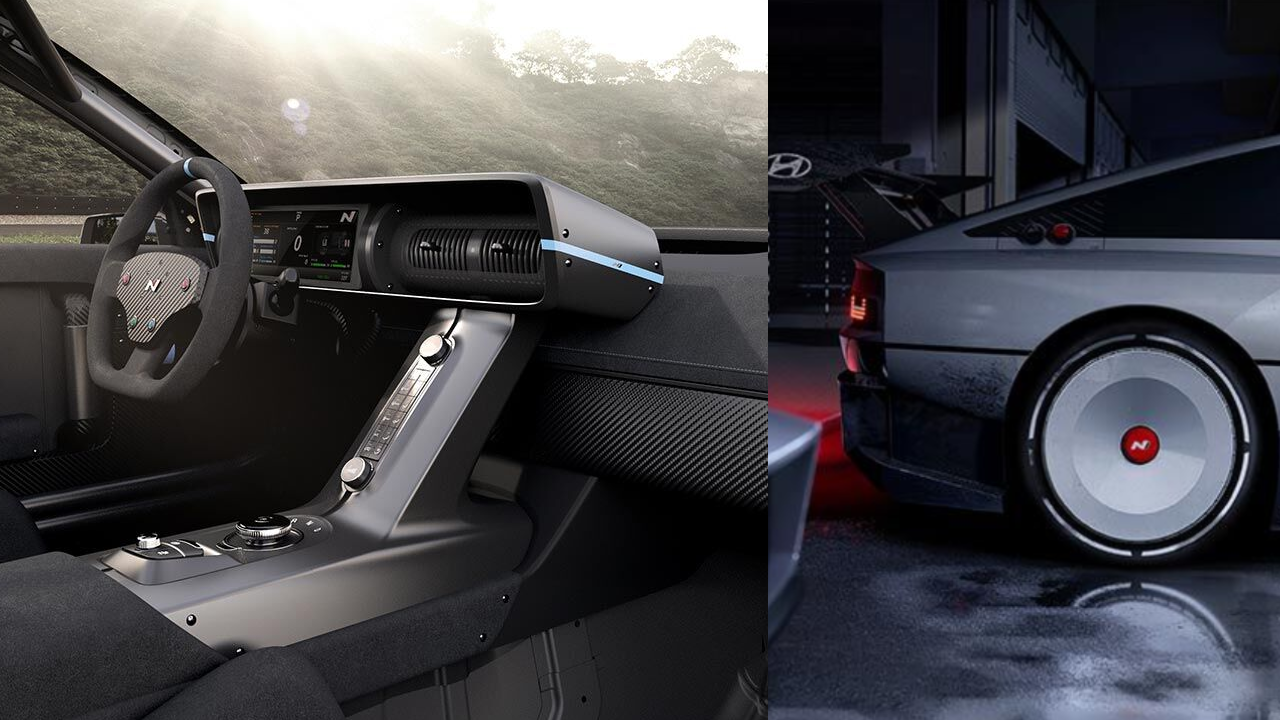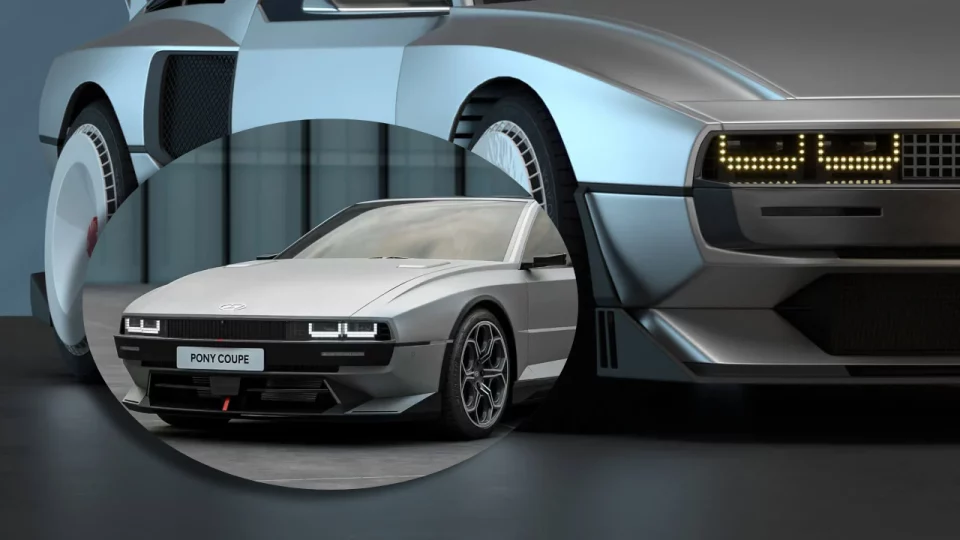Hyundai, a name synonymous with innovation and relentless pursuit of excellence, has once again set the automotive world ablaze with the announcement that their N Vision 74 concept is confirmed for production.
This futuristic vehicle, which first captured imaginations when it was unveiled as a concept, represents not just a leap in design and performance but also a significant stride towards a sustainable future powered by hydrogen. As one of the 21 new models Hyundai plans to release by 2030, the N Vision 74 stands out as a beacon of the brand’s commitment to pushing the boundaries of what is possible with alternative fuels.
Table of Contents
A Nod to the Past: The Pony Coupe Concept Reimagined

The N Vision 74 is not just a product of futuristic thinking; it is deeply rooted in the rich history of automotive design. The car draws its inspiration from the Pony Coupe concept of 1974, a vehicle that was itself a masterpiece of its time. The ’74’ in its name is a clear homage to this iconic predecessor. Designed by the legendary Italian designer Giorgetto Giugiaro, the original Pony Coupe was a vehicle that symbolized the aspirations of a young, ambitious Hyundai. Giugiaro, whose portfolio includes the BMW M1, Maserati Merak, and De Tomaso Mangusta, infused the Pony Coupe with a distinctive aesthetic that combined sharp lines, a minimalist silhouette, and a futuristic aura.
The N Vision 74 captures the essence of the Pony Coupe but elevates it with modern flair and technological prowess. The design language is an interesting blend of nostalgia and innovation. The car features rectangular lights, thick B-pillars, and a sharp roofline—elements that directly echo the original concept. However, the N Vision 74 doesn’t just rest on its laurels; it boldly pushes forward with a muscular body kit, a prominent rear wing, and a plethora of air ducts that give it a purposeful, almost aggressive stance. This is a car that looks as if it was born to race, yet it retains the elegance and simplicity of its ancestor.
Powering the Future: Hydrogen as the Key to High Performance

What truly sets the N Vision 74 apart from other high-performance vehicles is its groundbreaking hydrogen powertrain. In a world where electric vehicles (EVs) are becoming increasingly mainstream, Hyundai is betting on hydrogen as a complementary solution to battery-electric technology. The N Vision 74 is equipped with a powertrain that combines a fuel cell with a 62.4kWh battery, supported by two hydrogen tanks capable of holding 4.2kg of hydrogen each. Together, these elements create a system that produces an astonishing 670bhp and 664lb ft of torque, all while emitting nothing but water vapor.
The hydrogen fuel cell in the N Vision 74 operates by converting hydrogen into electricity through a chemical reaction with oxygen. This electricity is then used to power the car’s electric motors. Unlike traditional internal combustion engines, this process does not produce harmful emissions, making hydrogen a truly green alternative. Moreover, the car’s battery can store energy generated by the fuel cell or captured through regenerative braking, providing an additional boost when needed. The theoretical boost pressure in this system is a jaw-dropping seven hundred bar of PSI, a figure that not only highlights the car’s performance capabilities but also its engineering sophistication.
Hyundai N Vision 74 – The Challenges and Promise of Hydrogen
Hydrogen as a fuel source is not without its challenges. Currently, the infrastructure for hydrogen refueling is limited, with few stations available globally, particularly when compared to the rapidly expanding network of EV chargers. This scarcity of refueling options has been a significant barrier to the widespread adoption of hydrogen vehicles. Additionally, the production of hydrogen itself can be energy-intensive, depending on the method used, with some processes still reliant on fossil fuels.
However, Hyundai is not deterred by these challenges. The N Vision 74 is as much about pioneering new technology as it is about proving that hydrogen can be a viable and even superior alternative to battery-electric vehicles in certain contexts. The car’s design and performance capabilities are intended to spark interest and investment in hydrogen infrastructure, encouraging the development of more refueling stations and more sustainable hydrogen production methods. Hyundai envisions a future where hydrogen and electricity coexist, each serving different purposes in the automotive landscape.
Hyundai N Vision 74 – Balancing Innovation with Practicality

While the N Vision 74 is undoubtedly a performance-oriented vehicle, Hyundai has also ensured that it remains practical and usable in the real world. The car is fitted with a fully operational dashboard, complete with controls for the air conditioning and wiper blades—features that might seem mundane but are crucial for everyday usability. This focus on practicality underscores Hyundai’s intent to make the N Vision 74 more than just a concept car for auto shows. It is a car designed to be driven, to be experienced, and to serve as a bridge between the present and the future.
The operational dashboard also reflects Hyundai’s understanding that for hydrogen vehicles to gain traction, they need to offer the same conveniences and reliability that consumers expect from traditional vehicles. This means that while the N Vision 74 pushes the envelope in terms of performance and sustainability, it does not sacrifice the creature comforts and usability that drivers have come to expect.
The Road Ahead: What the N Vision 74 Means for Hyundai and the Automotive Industry
The confirmation that the N Vision 74 will enter production is a significant milestone for Hyundai and the automotive industry as a whole. It signals a shift towards more sustainable, high-performance vehicles that do not rely solely on batteries. This move could also prompt other automakers to explore hydrogen as a viable alternative to both traditional fossil fuels and purely battery-electric systems.
Hyundai’s decision to bring the N Vision 74 to market aligns with a broader trend in the automotive industry towards diversification of energy sources. While battery-electric vehicles have dominated the conversation around sustainable transportation, hydrogen offers unique advantages, particularly in terms of refueling speed and energy density. A hydrogen vehicle like the N Vision 74 can be refueled in minutes, compared to the longer charging times required for even the fastest EVs. Moreover, hydrogen fuel cells offer a range that can rival or even exceed that of many current electric vehicles, particularly in larger, heavier models like trucks and SUVs.
For Hyundai, the N Vision 74 is not just a vehicle; it is a statement of intent. It reflects the company’s commitment to innovation, its willingness to take risks, and its vision for a future where high performance and sustainability are not mutually exclusive.
By 2030, Hyundai aims to release 21 new models, many of which are expected to incorporate advanced powertrains, whether they be hydrogen, electric, or hybrid.
The N Vision 74 will likely serve as a flagship model, showcasing the best of what Hyundai can offer in terms of design, technology, and environmental responsibility.
